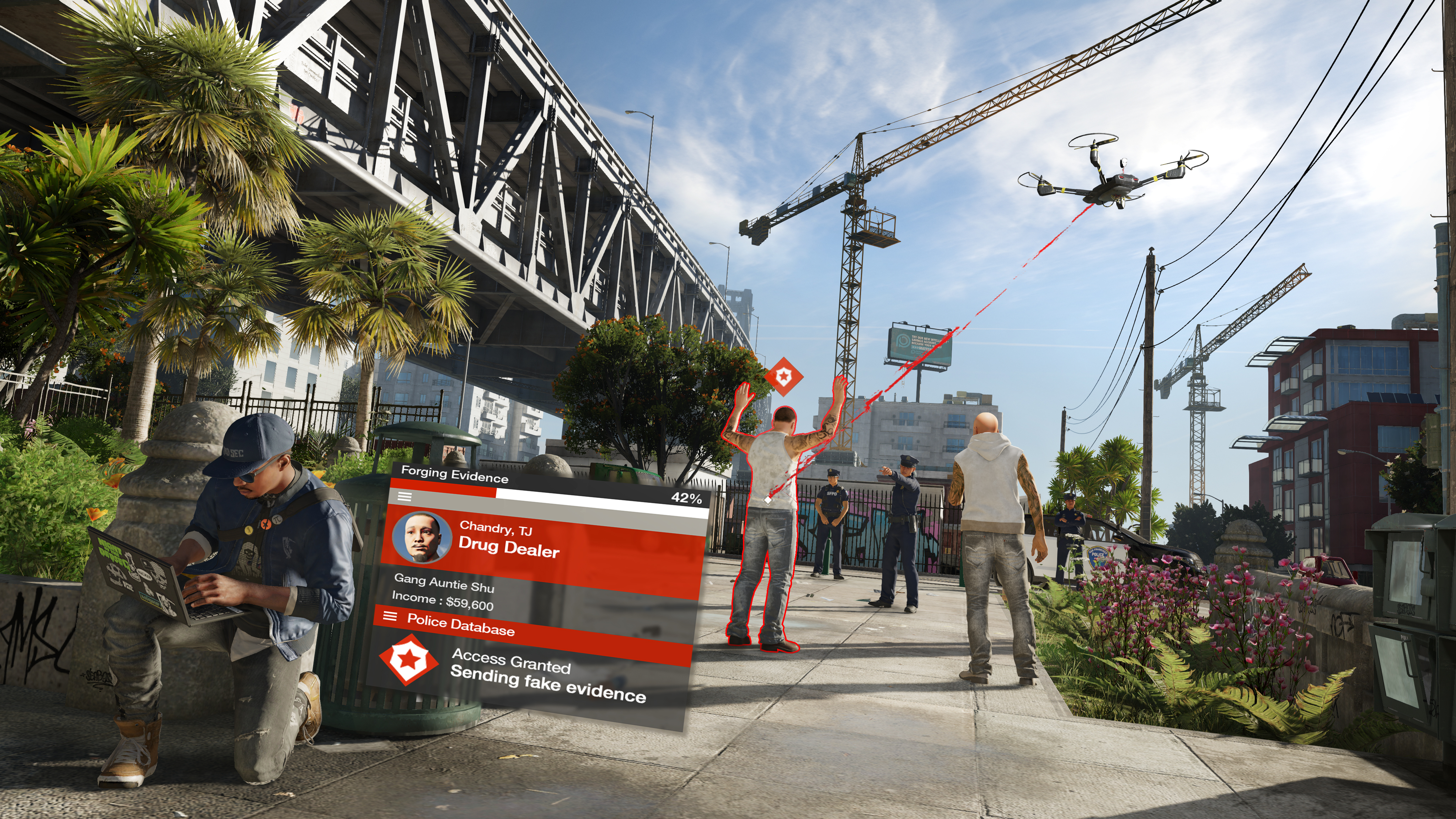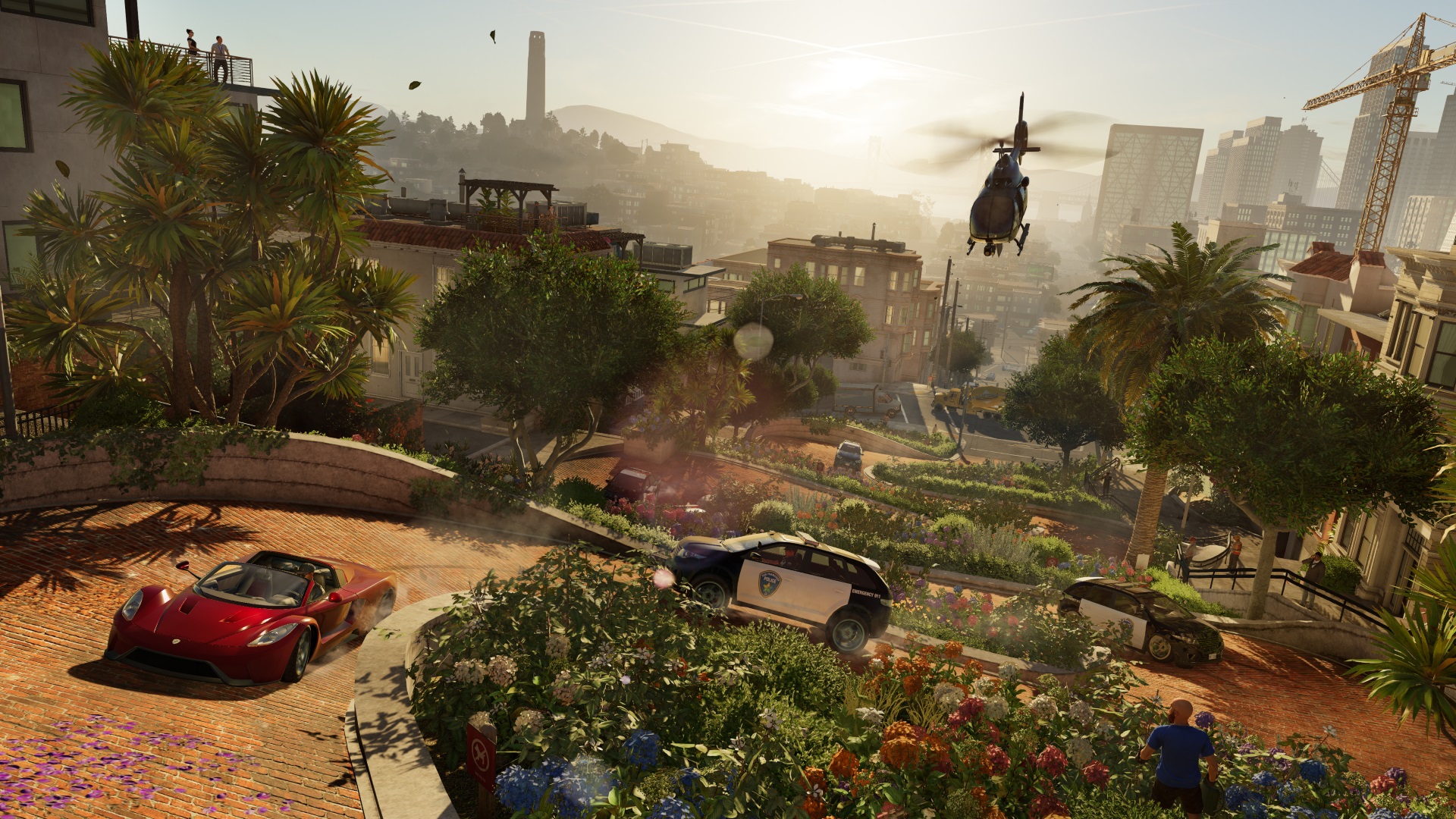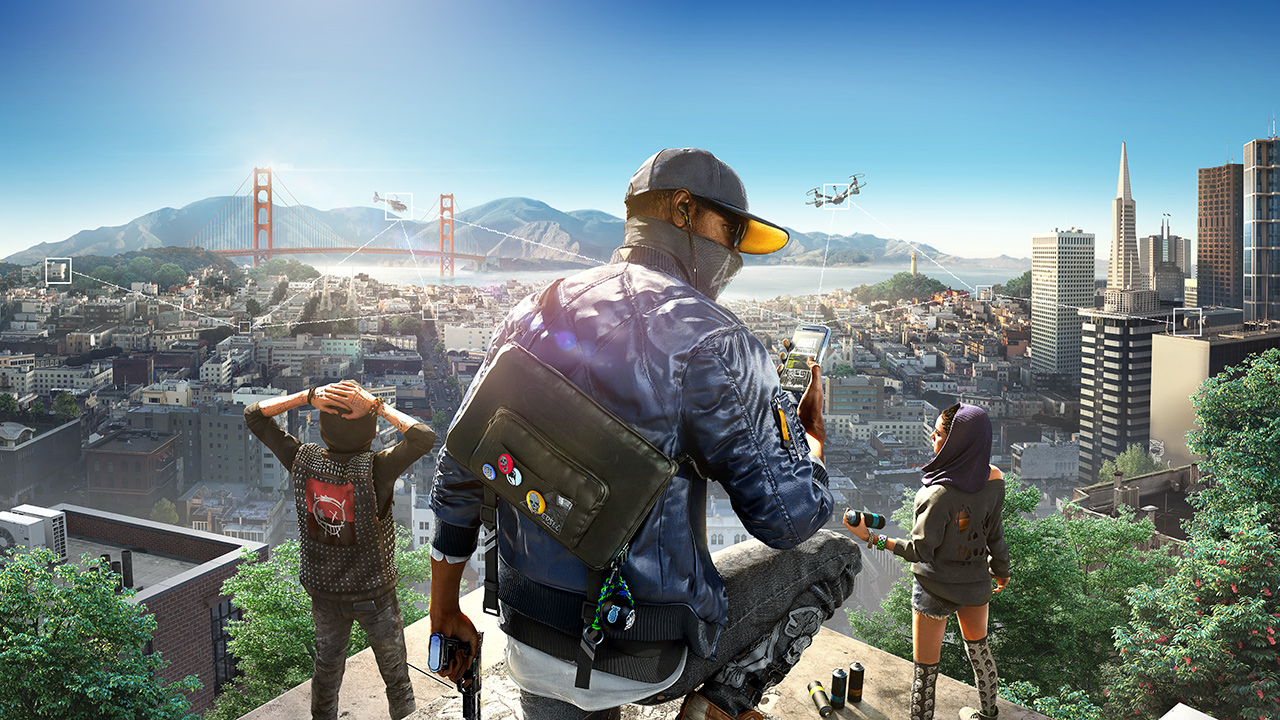Hack to the future: Watch Dogs 2 finally delivers on the hacker fantasy
Now that the dust has settled, and talk of downgrades and false promises has hushed, we can see Watch Dogs for what it is: the wobbly baby steps to something bigger. We’ve seen this before with Ubisoft. Take Assassin’s Creed 1, where a cool mechanic - parkour-powered murder - was wasted on a medieval bench simulator. Watch Dogs also gave us a power and no real outlet for it: a man who can hijack the digital world, only to spend his time stealing music from iPhones and blowing up steam pipes. But if Assassin’s Creed taught us anything, it’s that part twos can pay off. And so to Watch Dogs 2.
Gone are Chicago’s dour, trash-strewn streets, replaced with the iconic sights of San Francisco: The bridge! The pier! That weird bendy hill road that my dad was too scared to drive down on holiday once! And gone is Aiden Pearce, he of iconic cap and perma-grimace. In his place is Marcus Holloway, a young hacker of cheerier disposition, even when he’s whacking people with a billiard ball tied to a paracord - his homemade weapon of choice - or perforating them with guns replicated by his 3D printer. He’s a thoroughly modern maniac.
Like Pearce, Holloway can hack into nearby electronics, but rather than be limited to a single action - explode steam pipe, overload transformer, etc - he can push deeper and hijack them outright. A car in pursuit? A quick tap of L1/LB and they’ll veer into traffic; hold the button and you seize manual control via the face buttons, deciding exactly which piece of oncoming traffic to piledrive them into. In car chases it means the opportunity to turn a fleet of pursuers against each other; far more sophisticated than the first game’s ‘press X to win’ takedowns.
Hacking has subtler applications, too. Should an obstacle block your path in the dock district you need only wire into the digital brain of a forklift truck to start shunting objects around. Better still, if you find a guard blocking your path during a sneaky carpark infiltration, you can power up a dormant vehicles and reverse over him. The latter trick can even be combined with gadgets; attach an IED to a car and you can drive it straight into the goons you hope to explode. Hacks are a tool to be toyed with, rather than a context-sensitive gimmick.

The more nuanced hacking control extends to the city’s population. Where before you could probe into the lives of strangers and steal from specific targets, you now have the same level of access to anyone’s phone. Any NPC can be toyed with - careful, as strangers can pick fights with Holloway - and the introduction of mass hacks allows for impressive sights such as an entire plaza of shoppers thrown into disarray by a simultaneous phone disruption. Used during a firefight, the same trick lets Marcus stun an entire army before calmly wandering to his escape vehicle.
Even more tantalising is using San Francisco’s overzealous Big Brother security system - the returning ctOS - to turn the city against its people. You can give your target a criminal record and call the cops on them - again, be careful, as NPC vs NPC encounters can escalate into mass firefights - or flag the presence of gang members to rival clans. We’re promised more sophisticated NPC AI, allowing these encounters to take on a life of their own.

Less brazen hackers can work at a distance, using cameras to remote infiltrate enemy strongholds, or whipping out Holloway’s quadcopter or R/C car. The former takes to the skies to mark targets, like a less ridiculous version of Far Cry Primal’s attack owl, while the latter permits more direct meddling - giving dogs electric shocks to coax a distractionary bark, say, or unscrewing panels to allow access to hackable circuits. I’m told that putting these powers together lets you bring down entire operations without taking a single step.
Sign up to the GamesRadar+ Newsletter
Weekly digests, tales from the communities you love, and more
This angle of attack feels like the biggest throwback to the first game, with a variation on the R/C car already having appeared in a piece of DLC, Bad Blood. If you do choose to attack remotely, guards will try to root you out more aggressively. The answer to this is trying to find more hidden vantage points, using parkour abilities that let Marcus leap, dive and pirouette around obstacles that Aiden would clumsily heave himself over. Yes, by cribbing from Creed Watch Dogs 2 continues the trend of all Ubisoft Montreal games slowly converging into one uber-Ubi project, but kinetic energy of Holloway’s movement certainly helps conjure a more carefree tone.
It’s a less lonely existence, too. Where Pearce cast himself as a lone wolf vigilante, Holloway is part of growing hacker movement, DedSec, the prankster hacktivists who previously lurked in Chicago’s shadows. Story progress is tied to growing DedSec’s following through, well, pretty much whatever you do in the game. Do you want to target shady goings on at social media giants (‘Nudle’ is a clear stand-in for Google, right down to the obnoxious rainbow-hued campus) or tackle sinister developments in the world of AI? You’re free to pick your cause; in the digital frontier that is Silicon Valley, there are plenty.

This friendlier Watch Dogs extends to a co-op element that sees friends going about their own business in the city (think Division, Destiny et al) until you opt to partner up. The two of you can do special co-op missions and any of the open world activities (you just know that there will be a bazillion collectibles - it’s a Ubisoft game). The idea of unleashing dual hacks is what most excites me - at one point I see one player using their hovercopter to watch over the second as they sneak into enemy territory. Of course, malcontents are catered for, too - the online invasions from the first game return.
And this, I’m told, is but a glimpse of what’s achievable. By evolving hacking into a toy to be experimented with, Watch Dogs 2 embraces the sandbox spirit in a way the original never did. It’s no longer power at the press of a button, but the ability to carefully turn tech against its users and abusers. It is a great idea that has finally found a world, and play style, worthy of it. It finally feels like Watch Dogs has arrived.
Matthew Castle is the former editor of Official Nintendo Magazine and Official Xbox Magazine. He was also part of the team on the Nintendo Gamer magazine back in the day. Since then, he's worked at Rock, Paper, Shotgun as part of their video team, as well as for the official Xbox On YouTube channel. Nowadays, he's a freelance games critic and consultant, and one half of the Back Page podcast.



